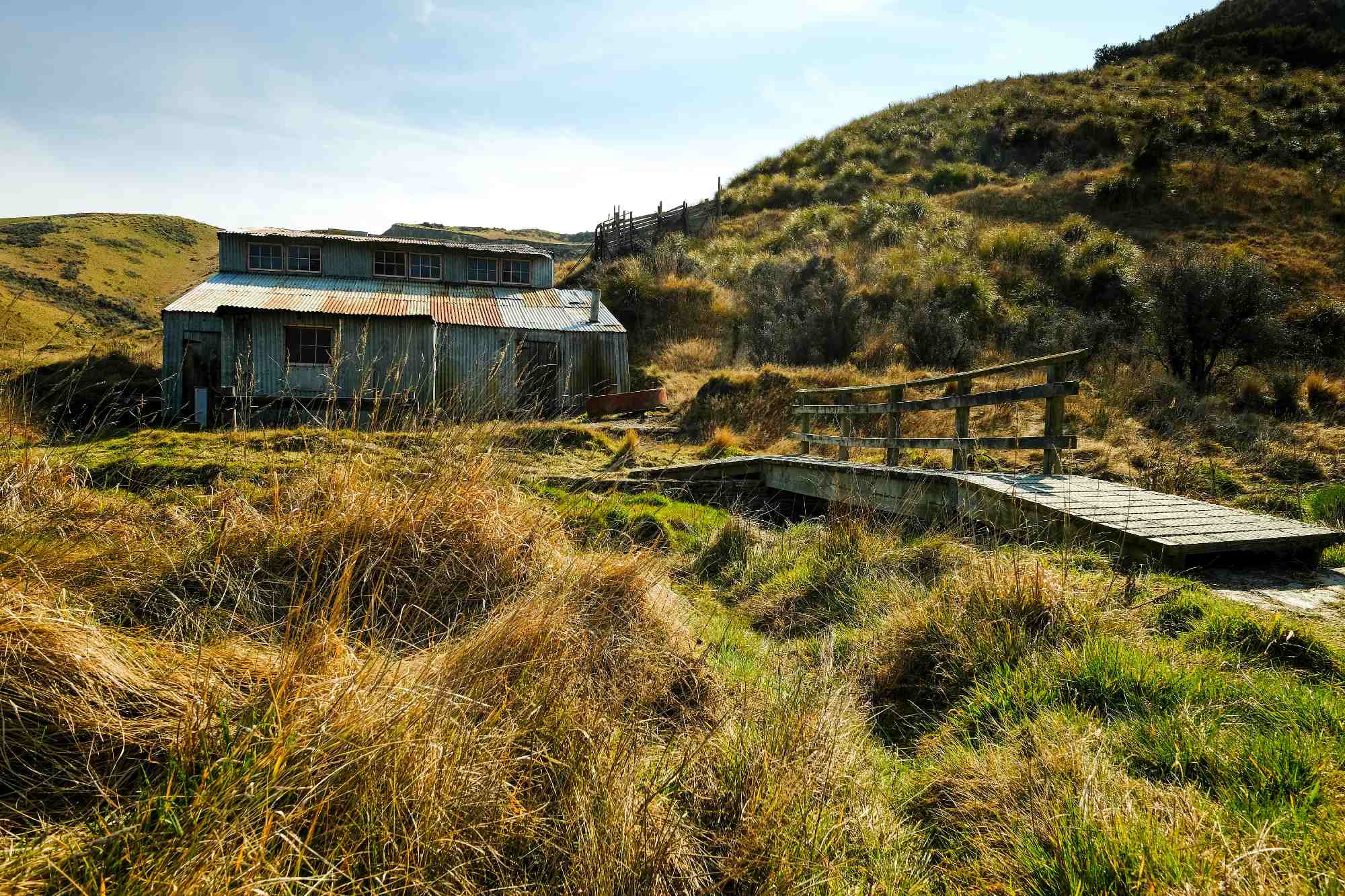OceanaGold’s Macraes Operation in the South Island of New Zealand is an open pit and underground gold mine located in Central Otago. Gold was first discovered in 1862 and there are still reminders of the early gold mining days in the area if you know where to look. OceanaGold is partnering with the local community and historians to preserve some of these sites.
Just down the road from the Macraes gold mine is the small settlement of Macraes Flat. During the gold rush in the 1860s, it was a busy mining town with around 25 businesses and a population of 500 people. Miners used shovels, pans, cradles, sluice boxes, sluicing and stamping batteries for both alluvial and hard rock mining.
Today, little remains from those times, but one building that has stood the test of time is Stanley’s Hotel.
The stone single-story Stanley’s Hotel was built in 1880s for owner Thomas Stanley. Thomas was the son of a sea captain who took over a ramshackle wooden building in the settlement and engaged a stonemason from Hyde, called Budge, to ‘build me an inn that will last”.
The schist stone for the building was quarried from a hill behind the local Catholic Church and transported by horse and cart to the site. Legend has it the entrance hall was laid with marble destined for St Joseph’s Cathedral in Dunedin that was waylaid along the way.
The stonemason, Budge, was well known for his craftsmanship, but also his great love of beer. It took him five years to complete the Stanley’s Hotel building and during this time he was paid in beer. It has been reported he consumed “72 hogsheads in all”, equivalent to over 51,000 cans today.
Stanley’s was renowned for the quality of its food and hospitality in an age when wayside food and lodging were of great importance in isolated communities. The hotel remained in the Stanley family until 1960.
Today Stanley’s Hotel is the centrepiece of the small settlement of Macraes Flat The building is owned by OceanaGold and leased to hoteliers who welcome patrons daily. The company has spent over $300,000 in earthquake strengthening and refurbishing of the hotel and its outbuildings, which include a billiards room, a stone shed, stables and pig pen.
Another reminder of the early days of gold mining – Callery’s Battery – requires visitors to cross an active mine haul road where large mine trucks cart ore to the company’s Process Plant. When the road is clear a guard signals that it safe to cross, and members of the public can drive their cars to the Golden Point Historic Reserve carpark then proceed on foot to the battery.
Callery’s Battery is New Zealand’s best surviving example of an authentic working stamper battery on its original site. Built in 1902 to serve the Golden Point gold mine, the five-stamper plant operated until the 1950s and processed both gold and scheelite. Hundreds of stamper batteries used to operate across New Zealand, but almost all were sold for scrap in the middle of last century.
In May 2020 Callery’s Battery was listed as a Category One Historical Place on the New Zealand Heritage List. The battery is now protected and looked after by the New Zealand Department of Conservation as an outstanding example of a small-scale stamp battery in original working condition. It shows how a stamp battery was set up to run, with its stamps, drive train and power source all intact and how all the smaller elements in a battery, such as workshops, electrical plant and the forge were arranged.


